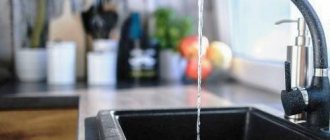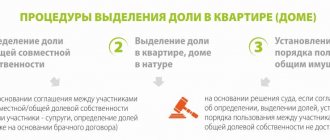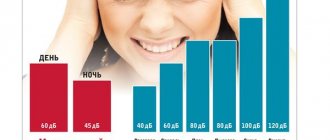General concepts
The use of public services today is regulated by special legal norms. It should be noted that the delivery must be carried out in accordance with the standards established by law. First of all, this concerns the parameters of hot and cold water. The requirements for the delivery mode must be met. Accordingly, in case of violation of the regime, citizens have the right to contact the relevant regulatory authorities to resolve the situation. But at the same time, the circulation regime itself must be observed. It is required to confirm the very fact of the existence of violations. A specific mode is set for cold and hot water. Moreover, most often difficulties arise due to hot temperatures. Cold water supply, as a rule, does not cause any complaints in most cases.
What it is
Cold water supply refers to a number of special standards aimed at providing ordinary citizens with water. One of the most important points that directly affects the quality of supplied water is engineering communications.
For 2021, the cold water supply system includes the following:
- the pipeline itself – through which delivery is carried out to an apartment or household;
- pipe entrance, supply to the building;
- various types of fittings - shut-off, mixing, etc.;
- water meter units;
- all kinds of water filtration devices;
- pump equipment.
Moreover, the longer the path the water travels, the higher the likelihood that it will not comply with certain standards established by law.
Since today there are many nodes in the water supply system where the initial parameters are changed. There is a special SNiP according to which drinking and other water is supplied.
This document determines the quality of such water, as well as its temperature. It may vary slightly depending on pressure and some other important factors. Legislation and various regulations also determine the cold water supply mode. According to the standards, the break should not be more than 8 hours in a row.
It is also important to note that, in general, the characteristics of the cold water supplied do not play a special role in the comfort of the supplied utilities. In accordance with GOST, not only the water parameter is determined, but also its pressure in the pipeline and other important points.
Today, the main document defining the issue of water supply to residential buildings and other premises is SanPiN 2.1.4.2496-09. The document itself includes a fairly wide list of various standards and additional documentation. Taken together, all this determines the main points directly related to the use of public services.
For 2021, this legislative document includes the following:
| Chapter | Description |
| Chapter No. 1 | area of application where compliance with specific data is strictly necessary |
| Chapter No. 2 | general provisions, the most important points regarding the use of the document are indicated |
| Chapter No. 3 | basic requirements for the design and construction of various systems for the operation of utilities |
| Chapter No. 4 | how industrial control is carried out over the quality of drinking water, as well as all other indicators |
Chapter No. 5 defines all issues related to state control in the supply of relevant housing and communal services. The number of water samples per month and other standards are indicated.
Knowledge of legal norms will allow a citizen to independently monitor his rights. If they are violated, carry out the process of defending them in court or otherwise.
It is worth noting that controversial or conflict situations that often arise in the housing and communal services sector are best resolved peacefully. Since legal proceedings take a lot of time, they require some expenses. If for some reason it is not possible to resolve the situation peacefully, then the best solution would be to go to court.
There are also state city special services that monitor this area. By contacting them, it will be possible to influence public services that deal with the issue of supplying cold water and other public services.
It is important to first study all the main regulatory documents. Often, a case is refused due to the lack of properly executed documents.
Cold water temperature in the tap
Clause 10.11 #8212 Chapter 10 Hydraulic mode
The value of water pressure in the return pipelines of water heating networks of open heating systems during the non-heating period, as well as in the supply and circulation pipelines of the hot water supply network, should be taken to be 0.05 MPa greater than the static pressure of hot water supply systems to consumers.
Clause 16.17 #8212 Chapter 16 Heating points
Water treatment should not worsen its sanitary and hygienic indicators. Reagents and materials used for water treatment and having direct contact with water entering the hot water supply system must be approved by the Ministry of Health of Ukraine for use in domestic and drinking water supply systems.
SNiP 2.04.01 Internal water supply and sewerage of buildings
Clause 2.1 #8212 Chapter 2 Quality and temperature of water in water supply systems
The quality of cold and hot water supplied for household and drinking needs must comply with GOST 2874-82. The quality of water supplied for production needs is determined by technological requirements.
Clause 2.2 #8212 Chapter 2 Quality and temperature of water in water supply systems
The temperature of hot water at water intake points should be provided:
- a) not lower than 60 C - for centralized hot water supply systems connected to open heating systems
- b) not lower than 50 C - for centralized hot water supply systems connected to closed heat supply systems
- c) not higher than 75 C - for all systems specified in subparagraphs “a” and “b”.
Clause 2.3 #8212 Chapter 2 Quality and temperature of water in water supply systems
In the premises of preschool institutions, the temperature of hot water supplied to the water fittings of showers and washbasins should not exceed 37 C.
Clause 2.5 #8212 Chapter 2 Quality and temperature of water in water supply systems
The temperature of hot water supplied by water heaters to the distribution pipelines of centralized hot water supply systems must comply with the recommendations of the manual for the design of heating points.
Clause 5.12 #8212 Chapter 5 Hot water plumbing systems
The pressure in the hot water supply system at sanitary appliances should be no more than 0.6 MPa (6 kgf/cm2).
The hydrostatic pressure in the drinking water or fire-fighting water supply system at the level of the lowest located sanitary fixture should not exceed 60 m.
The hydrostatic head in the separate fire-fighting water supply system at the level of the lowest fire hydrant should not exceed 90 m.
Notes:
- 1. In the fire-fighting water supply system, during fire extinguishing, it is allowed to increase the pressure to no more than 90 m at the level of the lowest located sanitary fixture, while hydraulic testing of the systems should be carried out with installed water fittings.
- 2. When pressures at fire hydrants exceed 40 m, diaphragms should be installed between the fire hydrant and the connecting head to reduce excess pressure. It is allowed to install diaphragms with the same hole diameter on 3-4 floors of a building (see nomogram 5 of the recommended Appendix 4).
Finally got around to talking about the latest achievements.
At some point I realized that a cold shower no longer suits me. I started running a bath full of cold water. I climb in and dive in, sometimes headlong, lying down as far as possible, but it doesn’t last long, just a few seconds.
Recently I was inspired and bought a thermometer. Can you imagine my disappointment when I measured the temperature - only 7 degrees.
Danger of relegation
Cold or lukewarm water in a hot water supply system is not only a problem of inconvenience and discomfort. If the water does not meet the required temperature, microorganisms dangerous to the human body can actively develop and multiply in it. The most common type is Legionella, which causes pneumonia and other dangerous diseases.
Fresh water at a slightly warm temperature is the most favorable environment for pathogens that can enter the body during water and hygiene procedures. Only heating water to the required temperature makes hot water supply safe.
What should the hot water temperature in the apartment be according to the standard?
The temperature regime of hot water supplied to the water supply systems of an apartment building is established by the Sanitary and Epidemiological Service, SNIPs and GOSTs.
SanPiN Resolution 2.1.4.2496-09 has a standard for hot water temperature, which must be at least 60 °C regardless of the system.
The lower threshold is set in a range that allows you to protect water from pathogenic bacteria. If the upper limit (75 degrees) is exceeded for any reason, this may cause the plastic water supply system to leak.
Before filing a complaint and requesting measurements, you can independently monitor the temperature of the water from the hot tap. To do this, you first need to open the tap and let the water flow for two to three minutes. This is necessary so that the water in the water supply system takes on a constant temperature. Then it is collected in a container where the thermometer is immersed. You can use a regular water appliance.
After the temperature on the thermometer becomes constant, write it down and take a series of measurements at other times of the day. When, during all the measurements taken, the instrument column shows a temperature below the standard, you should contact the management company.
It is necessary to report a discrepancy between the water temperature and the specified standards based on the results of measurements taken, since you pay for the resource and have the right to demand compliance with the standards. The management company must accept applications both in writing and by telephone.
All actions aimed at identifying the causes of violations must be recorded by the dispatcher. He, in turn, is obliged to notify the applicant about the work being carried out on the water supply line. If there are no problems on the water supply line, a representative of the management company (MC) is obliged to come to the address specified in the application and take measurements. The estimated exit time is set at two hours unless otherwise agreed with the applicant.
In the process of taking measurements in the presence of a representative of the management company, all thermometer readings are recorded in a report. This document must be completed. It is on this basis that you can demand a recalculation of the payment for hot water supply. Two copies are drawn up: one for the applicant, the second for the Criminal Code.
There are several factors that influence this parameter. Each of them is important. The water temperature for apartments in more or less developed countries is regulated precisely in accordance with these aspects.
Here is what affects such a standard in the MKD:
- type of water supply system;
- sanitary framework adopted in the state;
- to one degree or another - the standard of living in the country.
A thermometer with a scale of one hundred degrees Celsius is suitable for these purposes. The division value should ideally be at least one degree. The ability to carry out such standard measurements is necessary not only to understand the situation, but also to prove certain violations relative to the temperature norm. Otherwise, it will not be possible to substantiate claims against the management company (MC).
SanPin. Hot water temperature. What do you need to know?
The temperature of cold and hot water, for example, in a tap, is far from the only quality criterion according to GOST. A number of other points are also important. Namely: biological and chemical characteristics of water. And these factors are no less significant than temperature. Another thing is that checking them yourself is far from so easy.
In conclusion, it is important to note that the normal temperature of hot water in an apartment building in both 2021 and 2021 meets sanitary requirements. However, this temperature is not always observed. And it is important for residents of apartment buildings to be vigilant and inform the supervisory authorities if the water suddenly does not meet the standards.
According to the current law, the temperature of hot water must be at least 50 0C. However, there are some restrictions on this:
- The standard applies only to residential buildings connected to a central water supply system (DHW).
- Also, the minimum temperature depends on the type of system used. In an open system it is at least 60 0, and in a closed system – from 50 0. This is due to the fact that in the first case there is a pronounced heat loss.
- Permitted deviations from the norm depend on the time of day. It is allowed that in the period between 00:00 and 05:00 the temperature values of the water in the pipeline are 5 degrees less, and the rest of the time - by 3 0. Based on this, the normal temperature during the day is 57 0, and at night - 55 0.
Due to the reduced temperature, the flow rate of the supplied liquid increases. And as a result, the cost of utilities increases. If the water temperature in all water intake areas is low, pathogenic bacteria will begin to multiply. Under their influence, pathological processes develop in the human body.
For example, legionella can settle in warm fresh water. This is a dangerous microorganism that multiplies quickly and causes pneumonia and other serious pathologies.
The maximum temperature value is 75 0. This allows you to set suitable water temperatures during washing. Washing with too hot water is prohibited - it can negatively affect human health, causing instant burns. In addition, it causes deformations in the water supply system, especially often damaging plastic pipes.
SanPin 2.1.2496-09 is an important legislative act that defines the minimum (60 0) and maximum (75 0) temperature values for hot water. The permitted differences from the standards are also indicated here.
It notes that at the entrance to the house the temperature may be slightly higher. This is due to the fact that when passing through pipeline networks, the liquid may cool down slightly.
To check the quality of the supplied water, the user can measure its temperature. If the received data differs from normal values, he can complain to the service provider.
When taking measurements, certain rules must be followed. The work is carried out in the following sequence:
- Run water from the tap and leave for 3 minutes. During this time, the water will drain, so the resulting calculations will be as accurate as possible. If you measure the temperature immediately, the liquid may be colder or hotter.
- Fill a container with a large neck with water. After this, there is no need to close the mixer; water should constantly flow through the edges of the vessel.
- Measure the temperature with a household water thermometer. It must be in good working order, otherwise the obtained values may not correspond to reality.
- Record the obtained indicators and compare them with normal values.
- To ensure that the data is correct, it is recommended to repeat the manipulations several times.
Measurements taken independently will not have legal force. But it is necessary to carry out such measurements. After this, it will be possible to decide whether it is necessary to call independent experts.
When drawing up the act, the date and city are indicated at the top.
Then the act itself is drawn up. It looks something like this:
“We, the undersigned, the owner of the apartment ______________ (indicate address, apartment number) and the representative of Management Company RSU-7 LLC _______________ (full name of the representative) drew up a report on measuring the water temperature in the kitchen and bathroom. The measurements were carried out at ____ (indicate the exact time) with a water thermometer, taking into account the Methodological Instructions MUK 4.3.2900-11 (these instructions must be written down).
Recalculation of payment for hot water supply
If water is supplied of poor quality, the cost of the service is recalculated. The receipt has a “Recalculation” column, which adjusts the payment amount if there are certain grounds for this. The difference between the amount paid and the actual amount is credited to the future payment account.
Recalculation is made after the consumer submits an application. It must be accompanied by a protocol confirming the violations identified.
If payment is calculated without meters, according to the standards, recalculation is possible if the user is absent for more than 5 days. But he must present evidence for this - tickets, discharge from the hospital and others.
Attention! Recalculation must be completed within 5 working days. If the management company does not agree with the complaint, the tenant must be sent a written reasoned refusal within 30 days.
Sample application
When drawing up an application for recalculation of hot water, the following aspects are taken into account:
- In the upper right corner it is indicated to whom the application is being submitted (to the director of the HOA, his full name) and from whom.
- Then, “Application” is written in the center of the sheet, and below it is necessary to write “about the recalculation of fees for hot water.”
- The text of the statement should look something like this:
“According to my application, the hot water temperature was measured in the apartment I own at ___________ (indicate the exact address). Violations were detected as the temperature was ______ degrees. After this, an inspection report was drawn up. Based on this, it was determined that I was receiving a low-quality service that did not meet regulatory requirements.
In this regard, I ask:
– Recalculate the payment for hot water from the period –_________ (indicate the date when the check was carried out).
– Carry out the necessary work to ensure the supply of water at a temperature that meets sanitary standards.
- Below, indicate your full name and date of writing the application, and sign.
Attach a copy of the inspection report to the application. If there are grounds, the complaint must be satisfied within 5 working days after filing.
Temperature measurements: sample report
The Management Company will most likely not pay attention to an unfounded complaint. Therefore, you need to arm yourself with facts and measure the temperature of hot water in your apartment building yourself using a special sensor with a built-in regulator.
- Open the tap and drain the cooled water from the pipes (two to three minutes), then fill any suitable container.
- Without closing the tap, so that the water continues to flow over the edges, lower a regular household thermometer into the container.
- When the mercury column stops creeping up, record the readings.
If the temperature of hot water in the apartment from the tap does not meet the standards adopted for 2021, you can contact the housing and communal services.
GOST R 51617-2000 establishes acceptable values for temperatures in residential premises during the heating season. For a living room this is 18 degrees, for a bathroom - no lower than 25.
To check these values, you need to choose a cloudy day, since direct sunlight will heat the room, even if it is frosty outside, and also make sure that the room is airtight, eliminating cracks in door and window openings.
: act of measuring hot water temperature sample
How to measure the temperature of hot water in a tap?
Before filing a complaint and requesting measurements, you can independently monitor the temperature of the water from the hot tap. To do this, you first need to open the tap and let the water flow for two to three minutes. This is necessary so that the water in the water supply system takes on a constant temperature. Then it is collected in a container where the thermometer is immersed. You can use a regular water appliance.
After the temperature on the thermometer becomes constant, write it down and take a series of measurements at other times of the day. When, during all the measurements taken, the instrument column shows a temperature below the standard, you should contact the management company.
Temperature range according to law
The required mode is recorded in SanPiN 2.1.4.2496-09. In clause 2.4. The rules say that hot water in water collection areas should be a minimum of 60C and a maximum of 75C. This range is set regardless of what heating system is used in the house.
In open systems
SNiP 2.04.01-85 establishes the water temperature regime for open water supply areas.
In it in paragraph 2.2. it is said that in open-type systems the temperature should not be less than 60C. At the same time, it cannot exceed 75C.
In closed
SNiP 2.04.01-85 fixes a slightly different regime for closed water intake areas. In the same paragraph 2.2. it is indicated that in such places the water should not be below 50C. Maximum it should not exceed a value of 75C.
Where to write if they refuse to count
If, after taking official measurements, drawing up a report, writing a claim in the appropriate form, the RSO refuses to recalculate, it is necessary to involve government authorities in solving the problem:
- The State Housing Inspectorate, since its main function is to control the activities of enterprises in the housing and communal services sector.
- Rospotrebnadzor, which monitors the proper fulfillment of obligations in all areas, including housing and communal services, and also suppresses the threat of sanitary problems for citizens.
- The prosecutor's office is a supervisory authority that monitors the actions of public utilities, and also evaluates the inaction of government officials.
- Court. It will not change the temperature of the water, and if damage is indicated, the application will be accepted.
Permissible fluctuations
The law sets the permissible range of fluctuations in the temperature of water entering homes. The Decree of the Government of the Russian Federation dated 05/06/2011 N 354 stipulates two ranges.
At night, hot water from the tap can be colder or warmer than normal by a maximum of 5C. At this time, its minimum level is allowed to be 55C, and its maximum is 80C.
This applies to open water intake systems. In closed hot water supply systems at night the minimum temperature should be 45C. Night hours are considered to be the time period starting from 0:00 am and ending at 5:00 am.
During the daytime, a deviation of the regime by a maximum of 3C is permissible. At this time, 57-degree water may flow from the tap. But the maximum it can be is 78 degrees. This is acceptable for open water supply systems.
For closed ones, the temperature regime is different. Minimum water in them can be heated during the day to 47C. Daytime hours are considered to be the period from 5 am to 12 midnight.
Resolution 354 states that supplied hot water less than 40C will be counted as cold in calculations.
Nuances
To understand how much the supplier company should reduce the payment for hot water from the tap in 2021, you can make the calculation yourself. When recalculating payments for hot water supply, you must follow the following algorithm:
- divide the total number of days on which a violation of SanPiN was recorded by the number of days in a month;
- multiply the result by the tariff rate.
The resulting number will be the amount of the discount that the consumer can charge the management company.
Comments Showing 1 of 1
- Tamara 09:04 03/24/2021
Thank you.Answer
Actions if hot water is not up to standard
SNIP does not establish exact standards for the temperature of cold tap water, as it may depend on several factors.
- Season. In spring and summer, the temperature of the liquid may be slightly higher than at other times of the year. Since it is at this time that the sun’s rays heat the soil in which the water supply and water intake structures are laid.
- Water supply company. The fact that temperature standards are not specified in legislative and administrative acts allows suppliers to set them themselves. Typically, the minimum temperature threshold for cold tap water is 4 degrees, and the maximum is 20.
The minimum and maximum thresholds will be specified in the contract with the organization supplying the resource. Therefore, you can easily check the company for compliance with the established framework.
Ice means water cooled to a temperature close to the freezing point, ranging from +0.5. 2°C. Such parameters are in demand where rapid cooling is required using a non-toxic and absolutely safe coolant - in the food and construction industries, and air conditioning. Obtaining it is fraught with certain difficulties, since it is quite difficult to maintain the zero range, avoiding freezing and disruptions in the operation of the heat exchanger.
Thanks to the large working surface and thin layer of liquid, cooling is carried out as quickly and efficiently as possible. The ice coolant comes to the consumer from the storage tank, where it accumulates after cooling. It maintains a temperature in the range of +0.5. 2°C.
If hot water deviates from current standards, and the quality of the services provided is low, then the apartment owners write a statement to the management company. You need to add an appendix to it in the form of a copy of the examination conducted by an independent organization. After this, all that remains is to wait for the management company to solve this problem, which will take time.
When the management company does nothing or only unsubscribes come in response, then the answer to the question of what to do in case of deviations is that you should move on. To the housing inspection or prosecutor's office. In reality, many tenants often encounter similar situations when the management company does not want to eliminate its shortcomings, but only nods at supposedly objective circumstances.
They often say that they are not authorized to resolve such issues, they are not within their competence, and the management companies are not responsible for the operation of the pipelines. You can also find out that they are not at all aware of what temperature the hot water supply should be at the outlet of the water point, so the management company is not going to do anything to resolve this issue.
It is necessary to firmly defend your own rights, because only management companies are entrusted with the mission of public services. The DHW temperature at a rate of 60 to 75 degrees must be provided by management companies. It is their direct duty to respond to all complaints and eliminate problems. If this is not done, then the owners have the right to file a complaint with the prosecutor’s office and Rospotrebnadzor.
When deviations from hot water standards are detected, the management company negotiates with resource supply organizations, and in some situations repairs the engineering and communication system on its own. It often happens that in order to save money on users, some careless contractors shy away from carrying out pipeline repair work that they are simply obliged to carry out. In this case, you should feel free to complain to the prosecutor’s office or Rospotrebnadzor.
How to write a complaint to the management company
After identifying deviations in water temperature in the hot water supply system, a complaint is written. Before this, you first need to measure temperature indicators so that the measurement results can be indicated in the materials. The paper may be written in printed form or handwritten. The document should indicate:
- applicant's contact details;
- the name of the organization to which the complaint is sent;
- the reasons for the appeal, outlining the essence of the problem and attempts to solve it;
- list of documents confirming the claim;
- date of writing and signature of the applicant.
How to file a complaint
First you need to contact the housing and communal services department. Perhaps the reasons for the deviations are related to breakdowns on the highway and repair work.
Attention! In accordance with the law, housing and communal services must respond no later than 120 minutes after the request.
If the problems are persistent and a person is not satisfied with the quality of the hot water service, he can file a complaint with the Criminal Code. But during this he must take into account the following points:
- The application does not have to be printed; it can be written manually.
- In the upper right corner, indicate the applicant’s personal information – full name, place of residence, contact information.
- It is mandatory to write the name of the organization against which the complaint is being made. You can also send a claim to a specific person who is involved in solving hot water supply problems.
- The main part of the complaint indicates the reasons why the person had to write it (for example, temperature readings do not correspond to the norm, incorrect pressure in the system, presence of impurities in the water). You also need to describe the essence of the current problem and identify attempts to solve it (where the consumer applied, what was the response to his request). It is recommended to make references to the standards that are in force in the Russian Federation.
- After this, you must indicate the attached documents.
- At the end, the date of drawing up the claim is noted, and the applicant signs.
- The completed application receives its own code, which can be used to track it in the future.
If the Criminal Code refuses to solve the current problem, you must contact the police station. To confirm your claims, you must agree to an independent examination. If the expert does not identify any violations, the claim will be denied.








